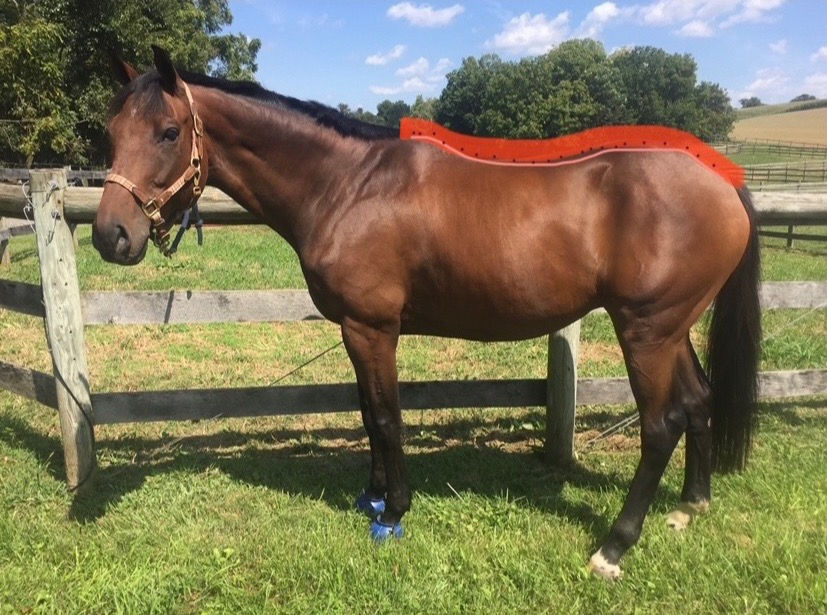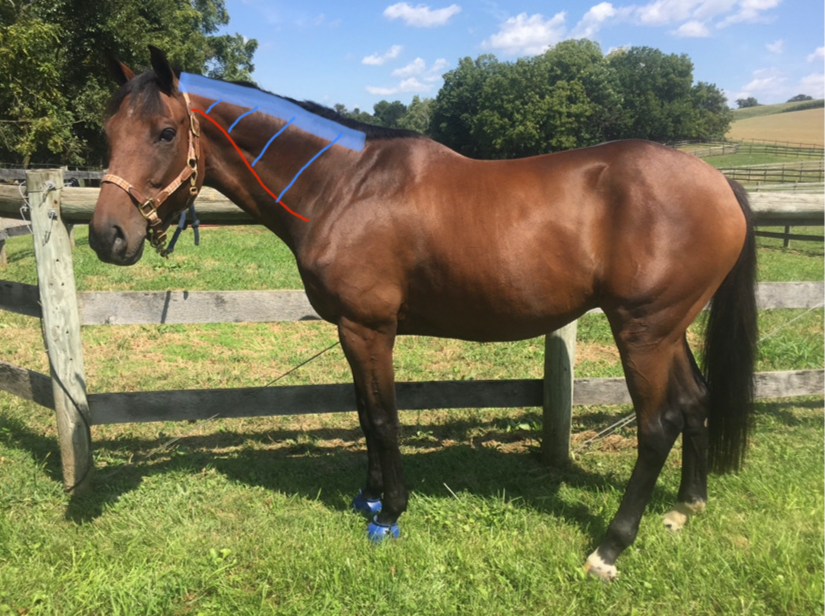Lets Talk T(opline) Part 2 of 3
- Olivia Lavender
- Jul 19, 2021
- 2 min read
So we talked about our new best friend the nuchal ligament. Well prepare yourself sweetheart, you’re about to meet its second half (its kind of disproportional relationship). See, while the nuchal ligament covers the base of the skull to about the beginning of the withers, the supraspinous ligament makes up the rest of the topline. Once again take a gander at Gorgeous Gunner being the super model he was born to be. The ligament is the wide orange line. Here we go again with the word break down. “Supra” is a Latin prefix meaning above. “Spinous”- pretty self explanatory for anyone working with a full crayon box, but if you’re not- it's the spine. All together now! This is the ligament that lays across the top of the spine, specifically the spinous processes (the funny looking pointy ends of the spinal column....the tiny purple dots under the wide orange line). It reaches from the from the top of what we picture as the wither (the beginning of the thoracic vertebrae)all the way down to the tail head. These are the bones involved in Kissing Spine- but that is a topic for another day. Aaaaand the big to do is….? While the nuchal ligament helped with balance and movement of the head and neck, the supraspinal ligament- in part, acts as a stabilizer for the spinous processes (kind of like coffee is a stabilizer for your trainer)- which allows the horse’s back to flex and extend, without letting the extension getting out of hand. (Ouch!) Fun fact: this is the only large ligament in the back that is fully palpable. Why is this important? Your dear equine massage therapist is jumping up and down waiving their hand! Palpation with firm pressure can help identify any pain in the connective structures, and to what degree. This is not meant to be a way to diagnose any serious issues, that should always be left up to your trusted veterinarian.
Once again, with this shiny new knowledge, watch your horse move. Think about how the structures of the spine are influenced by the supraspinous ligament.
Keep on those carrot stretches friends! See ya'll in part three!
***this image in not meant to represent an exact depiction of equine anatomy.


Comments